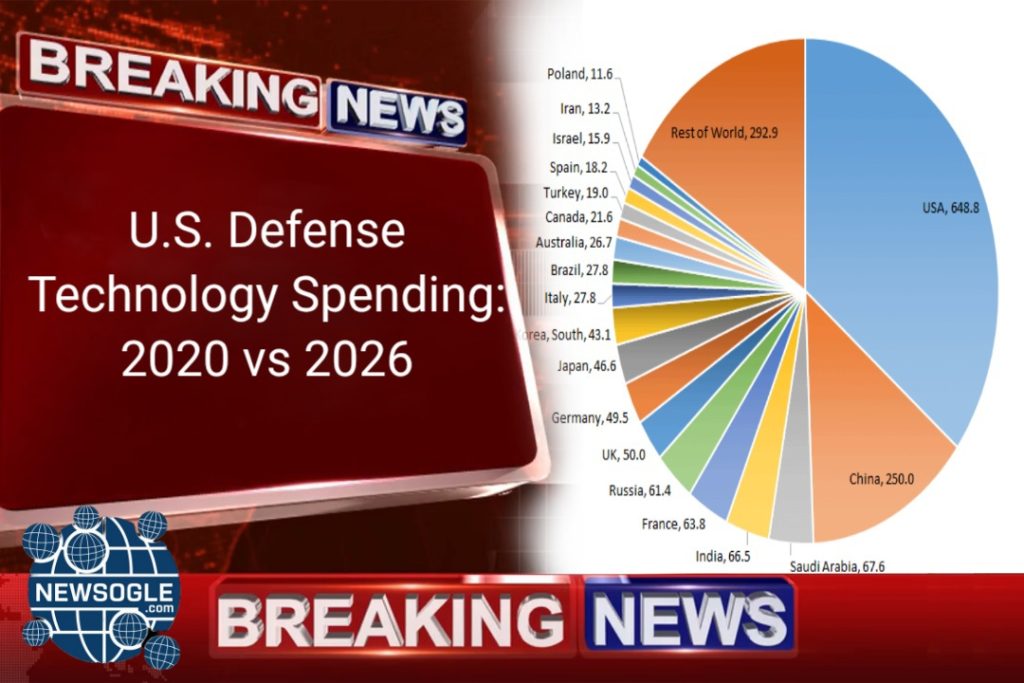
Washington D.C.: A striking shift in the U.S. Department of Defense’s (DoD) technological priorities is underway, with budget allocations moving decisively away from legacy systems and toward next-generation warfare capabilities. Analysis of DoD budget data, comparing fiscal year 2020 (actual spending) against the projected budget for fiscal year 2026, reveals a focused investment strategy centered on artificial intelligence, cyber warfare, and hypersonics.
The AI and Cyber Revolution
The most significant increases in investment are concentrated in domains crucial for modern conflict: the digital battlefield and cognitive warfare. The DoD is aggressively reorienting its spending to maintain technological superiority over strategic competitors.
| Technology Domain | 2020 Allocation (Approx) | 2026 Projection (Approx) | Percentage Change |
| Artificial Intelligence (AI) | $1.5 Billion | Over $4.5 Billion | ↑ 200% |
| Cyber Warfare | $9.8 Billion | Over $14.0 Billion | ↑ 43% |
| Space-Based Assets | $18.0 Billion | Over $26.0 Billion | ↑ 44% |
AI as the Force Multiplier
The near-tripling of the budget dedicated to Artificial Intelligence highlights its role as the DoD’s top technological priority. This funding is dedicated to:
- Autonomous Systems: Developing self-governing drones, robotics, and vehicles to reduce risk to personnel and increase operational tempo.
- Information Processing: Utilizing AI for rapid analysis of massive data streams from reconnaissance, surveillance, and target acquisition (RSTA) platforms.
- Predictive Maintenance: Implementing AI to forecast equipment failures, increasing readiness and reducing costly downtime for advanced assets.
Fortifying the Digital Frontier
Cyber spending is set for a substantial boost, reflecting the understanding that every modern military operation depends on secure and resilient networks. The increase focuses not just on defensive measures but also on developing sophisticated offensive cyber capabilities for strategic advantage.
Hypersonic Systems and Directed Energy
The race for high-speed, long-range precision strike capabilities is clearly defined in the budget figures, with hypersonics receiving a massive proportional increase in funding.
- Hypersonics: This area—encompassing missiles and glide vehicles traveling over five times the speed of sound—is projected to see its budget jump from approximately $3.5 billion in 2020 to well over $5.5 billion in 2026. This investment is seen as critical for bypassing advanced enemy air defenses.
- Directed Energy: Spending on advanced energy weapons (lasers and high-power microwaves) is also climbing steadily. While still a smaller portion of the overall budget, this technology represents a future solution for missile defense and drone neutralization at a significantly lower cost per engagement than traditional missiles.
The Decline of Legacy and Incremental Spending
The pivot to future technologies necessitates difficult cuts elsewhere. The data shows funding for several traditional or incremental technologies is either stagnating or declining in real terms:
- Legacy IT Systems: Funding for maintaining older, non-cloud-based IT infrastructure is being aggressively trimmed, forcing consolidation and migration to more secure and scalable cloud environments.
- Traditional Platforms: While core platforms like aircraft carriers and fighter jets remain vital, R&D spending on their incremental upgrades is slowing down as resources are diverted to completely new platform designs, particularly those incorporating autonomy and optionally-crewed capabilities.
Strategic Implications
This budgetary shift underscores a long-term strategic doctrine: the U.S. military is preparing for a high-tech, data-centric conflict.
“The 2026 budget is a roadmap of where future conflicts will be fought. It is a tacit acknowledgment that relying on sheer numbers of conventional platforms is no longer a viable strategy against peer adversaries. Superior data, superior speed, and superior autonomy will win the next war,” commented Dr. Sarah Chen, a defense analyst at the Center for Strategic Budgetary Assessments.
The DoD’s focus on these high-growth areas signals a clear commitment to technological disruption, fundamentally changing how the United States approaches defense and national security in the coming decade.

Aleda Kawis is the Professional Journalist and serving in the field since 2012. She keeps extensive experience as investigating journalist and media influencer.




